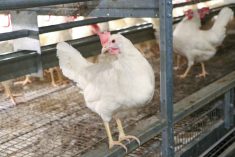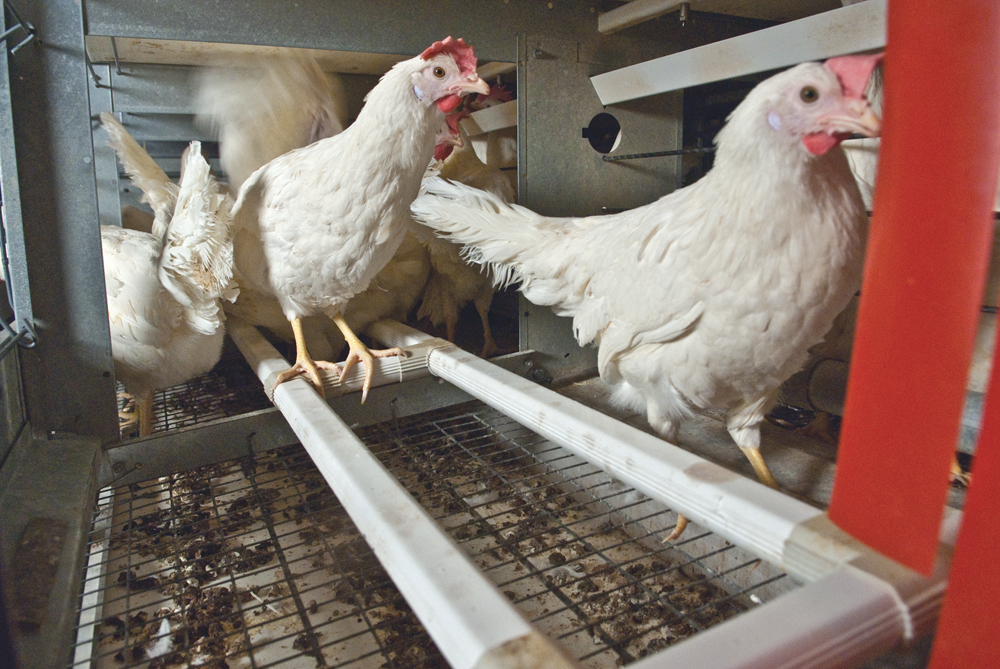In the past year, Canada lost its last veteran of the First World War, and as those who have lost parents who served in the Second World War know so well, fewer – now about 400 per week – are with us all the time.
That raises concern for those of us brought up in the strong tradition of observing Remembrance Day. Without parents or grandparents to remind us of their service and their sacrifice, will it be forgotten?
Apparently not, if the arrival of the Andrew Mynarski Memorial Lancaster bomber to Winnipeg last summer was any indication. Only one of two Lancasters still flying, it is maintained at the Canadian Heritage Warplane Museum in Ontario. During its four-day stay, visitors could climb through the aircraft and get a sense of what it would have been like to spend hours of danger in those cramped quarters.
Read Also

What I learned about Manitoba eggs
Manitoba-laid eggs provide good, locally produced nutrition while supporting local farmers and the Canadian agriculture industry.
If you didn’t mind waiting an hour or two in line, that is. While the crowd was sprinkled with a few who may have seen Lancasters in action, most looked more like their grandchildren or great-grandchildren.
That’s an encouraging sign that sacrifice is still being remembered, as are the reports that attendance at public Remembrance Day ceremonies has if anything increased in recent years.
Unfortunately, that’s partly because Canada is again at war in Afghanistan. Every few days or weeks when logging on to a Canadian news website, you see another photo of a soldier and you know what it means. A few hours ago, someone answered the door to see an officer and a chaplain, and immediately knew why they were there.
The faces in those photos usually look so young, especially to those of us with children that age, and it’s such a shock when you see soldiers in person, which you often do in airports. These are the ones we send to war – those who should have the longest future in front of them?
It was just 21 years between the two world wars – equivalent to the period since 1989, which doesn’t seem so long ago. Some servicemen fought in two world wars. Most of us who are children of Second WW veterans were in our 50s before it was time to go to Afghanistan, and by then we were too old. We are the luckiest generation in history. Let’s ensure that the sacrifices of our parents – and now our children – are not forgotten.
THE 24-HOUR RULE
It’s a rule that we use – or should use – when reacting to a slight from friends or family. Wait 24 hours, and then respond. By then you’ll have cooled down, and can avoid that instant reaction that may prompt you to say things you’ll regret later.
It’s a rule that farm organizations might consider when reacting to slights – or perceived slights – to their business. Last week’s instant reaction by the Canadian Egg Marketing Agency was a classic example.
On Tuesday, national media reported on a review in the Canadian Journal of Cardiologywhich warned of the danger of dietary cholesterol for those at risk of a heart attack or stroke.
Repeat, “for those at risk of a heart attack or stroke,” which isn’t necessarily the whole population.
To make their point that egg yolks (not whites) are a large source of cholesterol, the three authors noted that a single yolk contains 215 to 275 milligrams of cholesterol (the recommended daily amount for persons at risk of cardiovascular disease is 200 mg).
By contrast, there is 150 mg in a KFC “Double Down,” the controversial new fast-food item which consists of bacon and cheese sandwiched between two deep-fried chicken breasts.
Within hours of the report appearing in the media, CEMA fired off a release slamming the “irresponsible, inaccurate” report. “(C)omments made by these same researchers that a popular high-fat, high-calorie sandwich is more nutritious than eggs are quite simply irresponsible.”
The researchers said no such thing.
As for inaccuracies claimed by CEMA, the only one is apparently that it says there are only 195 mg in an egg yolk, compared to the 215-275 mg cited by researchers. However, an Internet search of various other sources seems to confirm the higher number.
It’s obvious what happened. When the story appeared, CEMA’s phone started ringing with calls from outraged producers saying “You have to do something.” So to keep them happy, it did, but if anything, the reaction was counterproductive to those who really matter – the media and consumers.
A better response would have been to note that the recommendation was specific to those at risk of heart attack or stroke and that if consumers had concerns, they should contact their doctors.
Even better would have been for the egg producers to contact the chicken producers, and suggest they should issue a release criticizing KFC for taking perfectly healthy chicken breasts and turning them into a calorie, fat and salt bomb. The more people who eat junk like that, the more who will be at risk of heart attack and stroke – and able to eat fewer eggs.
Next time, read the article carefully, wait 24 hours, and issue a response directed at consumers, not farmers. [email protected]
———
JOHN MORRISS
EDITORIAL DIRECTOR


















